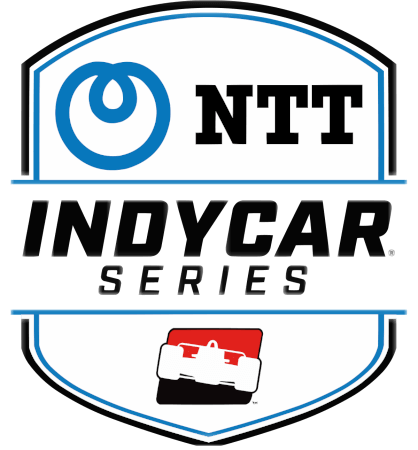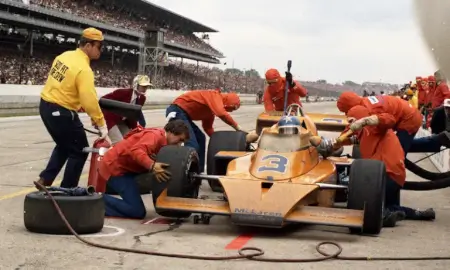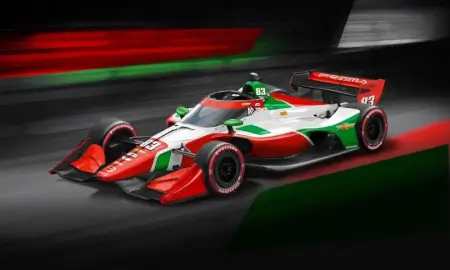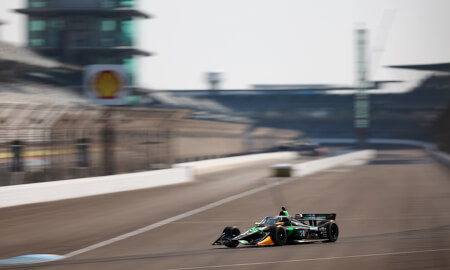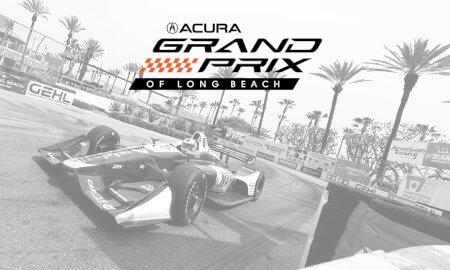February 29th 2024
IndyCar in early talks with manufacturers about 2027 engine formula
With Chevrolet and Honda under contract to supply 2.2-liter twin-turbo V6 engines through 2026, the NTT IndyCar Series has started preliminary discussions with its current manufacturers, and those they hope to attract, on where its future engine formula might be taken in 2027 and beyond.
In play since 2012, the existing turbo V6 specifications have had as many as three car companies committed to making and leasing bespoke motors for the series’ entrants to use, but the third — the Lotus brand from England — came and went after a single disastrous season.
Since 2013, Chevy and Honda have powered the entire field, which has ballooned to 27 full-time entries – an expansion that places exceptional stress on their finances and personnel to accommodate the season-long entries, and during the push to 33-36 cars in May at the Indianapolis Motor Speedway.
Sometime after the Indianapolis 500 – most likely in early July – the series expects to join the ranks of hybrid racing series when the energy recovery system (ERS) created in a joint venture between Chevy and Honda debuts in competition. The 2.2-liter twin-turbo V6 internal combustion engine (ICE) mated to the custom IndyCar ERS will become the new standard through 2026.
Sometime after the Indianapolis 500 – most likely in early July – the series expects to join the ranks of hybrid racing series when the energy recovery system (ERS) created in a joint venture between Chevy and Honda debuts in competition. The 2.2-liter twin-turbo V6 internal combustion engine (ICE) mated to the custom IndyCar ERS will become the new standard through 2026.
But with a dire and longstanding need to ease the burden on Chevy and Honda by bringing in at least one more manufacturer to spread the supply load, the series is under intense pressure to establish new ICE+ERS regulations that will inspire entice a new car company to join while inspiring its existing manufacturers to stay.
Late in 2023, Honda expressed grand concerns over the annual costs required to compete in IndyCar, said there was no guarantee it would or wouldn’t remain in the series, and suggested a shift towards a cost-controlled engine formula – one that relies on common components – to address the matter.
Multiple sources have told RACER that IndyCar is prepared to move forward with some form of spec solution, but according to Penske Entertainment CEO Mark Miles, “No decision has been made. However, there are ongoing conversations with our manufacturers and other prospective manufacturers and they’ve been really constructive, but they’re not simply focused on one approach in what we’re targeting for 2027 with whatever changes we might make in respect to both the power system and the chassis.”
RACER has confirmed the talks regarding its next powertrain formula have been in motion since 2023, and the series has presented a range of ideas, gotten feedback on those concepts, and received input on the types of technologies that interest its current and potential engine suppliers.
Of the legacy items in play, IndyCar made the switch to 100-percent renewable fuel last year, which was a major milestone it had been pursuing since at least 2018, and hybridization was announced as another important step for the series in 2019, which is meant to debut this summer.
Looking to 2027, ideas ranging from the aforementioned spec powerplant that could be used by any manufacturer, to increasingly powerful ERS units, to other alternate fuels are said to be among the possibilities being explored.
Although Hyundai and Toyota, two manufacturers who’ve looked at joining IndyCar as engine suppliers in recent years, are understood to be among those within the series’ consultation loop on the 2027 formula, IndyCar declined to name which brands — other than Chevy and Honda — are engaged in the process.
The last key area of forward-looking technology within IndyCar centers on the chassis that will carry the next engine formula.
The series provided clarification that no specific timeline has been set for the creation or introduction of a complete replacement for the Dallara DW12, which debuted in 2012. But as Miles mentioned, the current train of thought is to package some form of chassis update — anything from new aerodynamics to an all-new tub, if not more, with an emphasis on overall weight reduction – as part of a freshened look to the cars and their powertrains.
IndyCar also confirmed its focus for the opening months of the new season will be placed on bringing its hybrid package to life, and once that is closer to fruition, efforts to solidify the 2027 engine regulations will become a greater priority.
For more information: www.racer.com
For more information: www.racer.com
